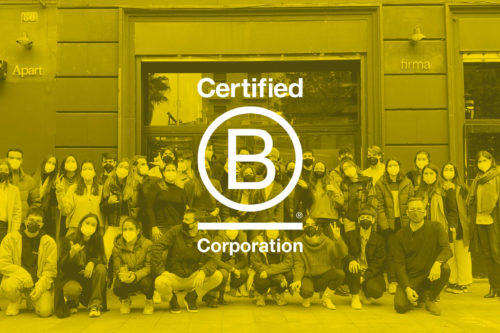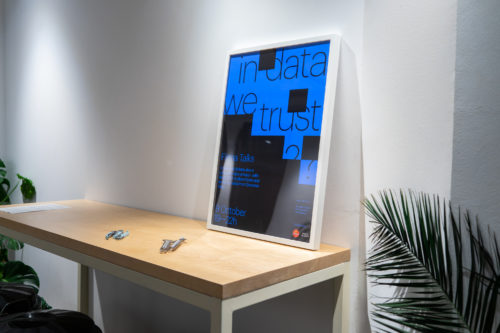By Andrea Arrieta
Storytelling can make or break a brand
Strategy | 2 min read

We can all agree that everyone enjoys a good story; whether it’s telling it or listening to one…proof of it is the irrational online-streaming binge watching most of us have inexplicably given into at one time or another.
During the last 5 years or so, “storytelling” has become a buzz word in the brand-building industry. An understandable trend given the fast-paced/ constantly-changing/ difficult-to-get-a-hold-of market reality we live in. Stories help things make sense, they give a full-circle argumentation to our choices, and have the quality to make what is being offered (a.k.a. products/services) feel more authentic; either because a) they are put in a context we can relate to, b) the story is built around a rising tension we connect with, c) because we feel attracted to the way (form) it is being delivered, or d) all of the above.
As in any genre, to build a good brand story you need good material to build it on; otherwise it just won’t hold up.
As in any genre, to build a good brand story you need good material to build it on; otherwise it just won’t hold up. A good example of a brand that last year built its storytelling over shaky ground and immediately suffered the consequences: the infamous Fyre Festival. It just goes to show that brand storytelling is (for now) the best and harshest test for any brand; it separates – relatively quickly – the ones with true content, from the empty shells. It can even take you out of the market, because as consumers, we are developing a keen sense for quickly detecting and rejecting trivial brand stories. Brand storytelling is ultimately the sword of Damocles in modern day branding.
So in the end, I personally feel happy and relieved for this trend; it’s making brands look inward, try to understand their “why”, think hard to define their story arch, and sometimes during the process even question and reformulate their business outlook to make it connect better or stronger with their customer’s needs and lives. Which should be a good thing, no?
READING

Climate Neutral Certified
We’re proud to announce that this year we are once again Climate Neutral Certified! Over the last few years, we have implemented several actions that allowed us to start the path of becoming a more responsible and conscious business; Climate Neutral is one of the steps we're taking to accomplish this exciting goal.

We are finally a B Corp certified company!
After one year of dedication, we are finally a B Corp certified company! It has been a transformational process in which we have learned a lot and worked harder to improve our standards as a company and as transformational agents.

10 Things We Learned from Data
Should we be paying attention to the impact data and algorithms are having in our society?

Uncovering CBD with Vybes founder Jonathan Eppers
We sat down with Vybes founder Jonathan Eppers to discuss the rise of the CBD industry in the US, how it's affecting branding and what's Vybes' take on the beverages category.

On our way to be a B Corp
After two days at the B Corp Summit in Amsterdam, I gained the inspiration, the energy, and the motivation to become a corporate sustainability activist. Activist? Oh, that sounds uncomfortable. Yes, that sounds like stepping out of the comfort zone.

10 Things We Learned from YesFuture & Sustainn
On June 26, Firma Talks invited three experts in the field of circular design — YesFuture, Sustainn, and Go Zero Waste — to tackle one of today's biggest challenges, our waste. We sat down and listened to Olga Rodriguez from Yes Future, and Carlos León from Sustainn address different angles of cutting plastic and generating less waste.

Eddie Would Go: Committing To A Greater Purpose
Companies can be a force for good. In fact, committing to a greater purpose is a growing demand among consumers. Through this article we explore some of the 1% For The Planet members who are taking a stand.

Apart: An Open Space for Innovation
Branding and innovation agency Firma, created Apart for pushing conversations, insights and ideas forward...

10 Things We Learned from Andreu Carulla & Curro Claret
“Upcycling has more to do with the value of the material”, he said. If the value of the material is higher than when it was a product, then it is effectively upcycled.”

Focus, focus and focus
During a trip to Logroño I discovered Bar Soriano, which made me realize that focusing on a single product allows you to work it to perfection.

Fulton and the power of combining letters
Let’s start with this random name that came into my mind: Fulton. You have only read the name. Never heard of Fulton. But think about Fulton and let your brain start imagining.

When dopamine wakes you up, you’re hooked
With hundreds and hundreds of notifications that you just can’t avoid opening, the well-known FOMO (fear of missing out) comes over you

Firma at Financial Times FT1000 2018 Ranking
We are very proud to have been chosen by the Financial Times as one of the most innovative, fast growing companies in Europe for the 2018 edition of FT1000.

Let’s welcome what will come
We believe that combining innovation processes, business strategy and a creative perspective is the way to build successful brands.











